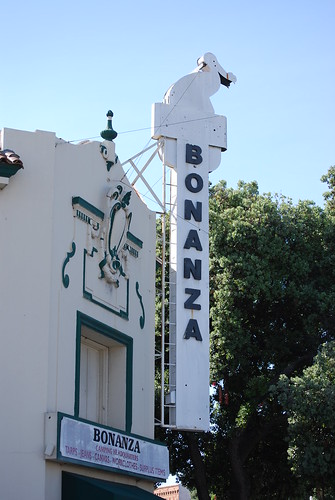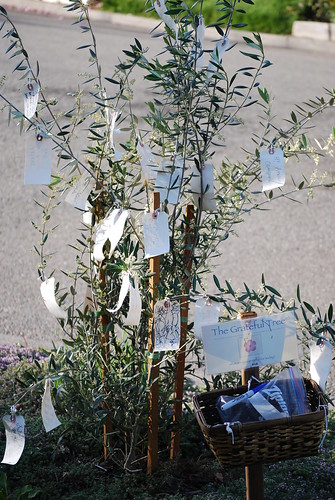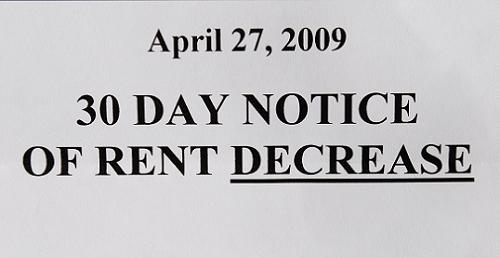If you’ve ever taken AirBART from the Coliseum BART Station to the Oakland airport, then you know the service is pretty slow and unimpressive, especially considering the $3 fare each way. So you might think that public transit advocates in and around Oakland would be delighted by BART’s proposal to build a faster connection between the BART station and the airport terminals. Under the plan, the AirBART bus service would be replaced by an elevated people mover that would whisk passengers at a rapid clip from the BART station to the airport. Sounds great, right?
Wrong! The fact that local transportation activists and bloggers seem to be unanimous in their condemnation of BART’s proposal for the Oakland Airport Connector is an indication of how problematic the plan is. To start with, BART would have to borrow $150 million to fund the $522 million project. Yes, this is the same BART that is scheduled to raise fares by over 5% next year, and is threatening that it may have to raise them even more to make up for shortfalls in their budget. So while the citizens of the Bay Area who rely on BART to get around day in and day out are being asked to shell out even more for fares, BART’s directors want the system to go deeper into debt to fund their longtime dream of a people mover that will soar above an East Oakland neighborhood. (Gotta protect those air travellers from the Oakland riffraff!)
You might ask: Well, won’t the train at least provide a top-notch service to passengers, taking them from BART to the terminal quickly and easily? No! While the proposed connector will get from the BART station to the airport much more quickly than AirBART, the $522 million budget will only pay for a single stop at the airport, between the two existing terminals, and on the far side of all the car and bus dropoff lanes. So while passengers will get to the airport quickly, they will end up farther away from the terminals than they currently do with AirBART, which stops at each terminal, and which only requires passengers to cross a couple of lanes of traffic to get to the gate. If they build a third terminal at OAK, as there is talk of doing, then passengers will have to walk even farther from the train to reach it.
On top of those issues, what seems worst about BART’s proposal to me is that they expect to charge passengers $6 each way for the airport connection (that’s on top of the BART fare that they have already paid). That high cost might be defensible if there was no better option as a replacement for AirBART, but in this case, there is another option. In a matter of a few weeks, the local transportation advocacy group TransForm put together a Rapid Bus proposal that would cost a tenth of BART’s proposal, would require no new debt, would be quicker to implement, would serve more people, would be almost as speedy, could pick up passengers near the hotels and businesses on Hegenberger Road if desired, could stop directly in front of each terminal, and best of all, could be absolutely free for passengers, because the money saved by not building an elevated people mover would allow BART to fund operational costs into perpetuity.
It’s frankly pretty sad that a group of activists seem to have put together a more appealing plan in a few weeks than BART was able to put together in decades of planning (an airport connector has been in the works forever; in 2000, Alameda County voters passed a measure to fund a $130 million connector, which has morphed into today’s proposal, which provides worse service than the original proposal at $400 million higher cost—and has lower ridership estimates to boot).
I hope the BART directors don’t underestimate the appeal of a free shuttle from BART to the Airport. $6 might not seem like much in comparison to the cost of a plane ticket, but I think the psychological difference between a free shuttle and a $6 people mover is enormous, especially for the price-sensitive people who are presumably likeliest to use BART to get to the airport in the first place.
I’m notoriously frugal, to the point where I once rode my bike 10 miles to the airport in the pre-dawn darkness, and locked it there for several days, all because BART doesn’t run all night and I was too cheap to pay for a cab or a shuttle. Another time, after returning from a trip, I walked from the airport to work in San Leandro because I didn’t want to wait for a bus, then dish out $1.75 for a ride of only a couple of miles (also, I just like to walk). So I might not be a typical case, but when you charge riders $6 for a 3-mile shuttle, on top of the roughly $2-$6 that they have already paid for bus and BART fare to get to Coliseum BART, you are giving people a pretty big incentive to just skip BART altogether and take a cab or a door-to-door shuttle.
At the last meeting of the BART board in late April, they reluctantly agreed to table the airport connector proposal until tomorrow, in order to study other options more closely (imagine that: studying other options closely before going $150 million deeper into debt). That’s when TransForm leapt into action and produced their counterproposal. If BART opts for the $6 elevated tramway instead of the free high-speed shuttle buses, I suspect it will not be on the merits, but rather because they have had their sights set on a sexy high-speed people mover for decades, and are too blinded by that long dream to weigh the pros and cons of the various options.
Like a lot of other people, I prefer trains to buses for vague, possibly irrational reasons (I basically never take the bus; if I’m crossing the bay, I will take BART, and if I’m staying in the East Bay, then I will usually either walk or ride a bike). So I understand the urge to build a train instead of replacing AirBART with an improved rapid bus service. In this case, however, the activists and bloggers have persuaded me that the costs (both to BART and to its passengers) of building the train in the sky are way too high to justify, especially given the limitations of the service that it would provide. I won’t be able to attend tomorrow’s BART board meeting where they will be deciding whether to go ahead with their grandiose plans, but local transit activists promise to be there in force, and I hope the BART directors are able to set aside their longterm fantasies and pursue a less flashy, but more practical, option instead.
 My friend
My friend 









